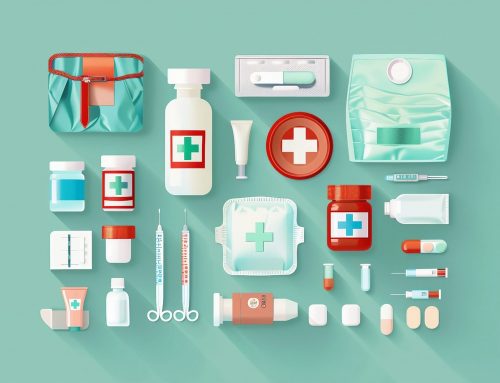
How to Source Medical Supplies: A Comprehensive Step-by-Step Guide
In the healthcare industry, sourcing high-quality medical supplies is critical to ensure patient safety and maintain the efficiency of medical operations. Medicamix, like any other healthcare provider, must follow a structured approach to procurement to ensure it secures reliable, cost-effective, and high-quality products. They serve in medical devices import and export in Turkey, supply medical consumables from Turkey, importing medical supplies from Turkey and more…
This comprehensive guide will walk you through the step-by-step process of sourcing medical supplies effectively.
Step 1: Define Your Requirements
The first step in sourcing medical supplies is to clearly define your requirements. This involves:
- Assessing Needs: Conduct a thorough assessment of your medical facility’s needs. Identify the types and quantities of supplies required, considering factors such as patient volume, types of services offered, and special medical conditions treated.
- Quality Standards: Establish the quality standards and specifications for each type of supply. Ensure these standards comply with regulatory requirements and industry best practices.
Step 2: Research Potential Suppliers
Once your needs are defined, the next step is to research potential suppliers. This involves:
- Market Analysis: Conduct a market analysis to identify potential suppliers. Look for companies with a strong reputation, positive customer reviews, and a proven track record in the healthcare industry.
- Product Range: Evaluate the range of products offered by each supplier. Ensure they provide the specific supplies you need and that they meet your quality standards.
- Compliance and Certification: Check for compliance with relevant regulations and certifications. Suppliers should adhere to healthcare standards such as ISO 13485, FDA regulations, and other pertinent certifications.
Step 3: Request for Proposals (RFP) or Quotes (RFQ)
After identifying potential suppliers, the next step is to request proposals or quotes. This process involves:
- RFP/RFQ Preparation: Prepare a detailed Request for Proposal (RFP) or Request for Quote (RFQ) document outlining your requirements, quality standards, and terms and conditions.
- Submission and Evaluation: Send the RFP/RFQ to the shortlisted suppliers and evaluate their responses. Consider factors such as pricing, delivery timelines, payment terms, and after-sales support.
Step 4: Evaluate Suppliers
Evaluating suppliers is a critical step to ensure you partner with the right companies. This evaluation should include:
- Site Visits and Audits: If possible, conduct site visits and audits to verify the supplier’s manufacturing processes, quality control measures, and storage facilities.
- References and Reviews: Check references and reviews from other healthcare providers. This provides insights into the supplier’s reliability, product quality, and customer service.
- Sample Testing: Request samples of the products for testing. Ensure the samples meet your quality standards and specifications.
Step 5: Negotiate Terms and Conditions
Once you have evaluated the suppliers, the next step is to negotiate the terms and conditions. This includes:
- Pricing and Payment Terms: Negotiate pricing and payment terms that are favorable to your organization. Consider factors such as bulk purchase discounts, credit terms, and payment schedules.
- Delivery and Logistics: Agree on delivery schedules, logistics arrangements, and any associated costs. Ensure the supplier can meet your delivery timelines consistently.
- Contract Terms: Draft a detailed contract outlining all agreed terms and conditions, including warranties, return policies, and dispute resolution mechanisms.
Step 6: Place Orders and Monitor Performance
After finalizing the contract, place your orders and start monitoring supplier performance. This involves:
- Order Placement: Place orders as per the agreed terms and conditions. Ensure clear communication of order details to avoid any discrepancies.
- Performance Monitoring: Continuously monitor the supplier’s performance in terms of product quality, delivery timelines, and customer service. Maintain records of any issues or discrepancies for future reference.
- Feedback and Improvement: Provide regular feedback to the supplier and work collaboratively to address any issues. This helps in maintaining a strong and productive relationship.
Step 7: Review and Optimize
The final step is to review and optimize your sourcing process regularly. This includes:
- Periodic Reviews: Conduct periodic reviews of your sourcing strategy and supplier performance. Identify areas for improvement and implement necessary changes.
- Cost-Benefit Analysis: Perform cost-benefit analyses to ensure you are getting the best value for your money. Consider exploring new suppliers or renegotiating terms if needed.
- Stay Updated: Keep abreast of industry trends, new suppliers, and technological advancements. This helps in staying competitive and ensuring access to the latest and best medical supplies.
Conclusion
Sourcing medical supplies for Medicamix requires a meticulous and structured approach. By following these comprehensive steps, you can ensure a reliable supply chain, maintain high-quality standards, and optimize costs. Effective sourcing not only supports the smooth operation of your healthcare facility but also enhances patient care and safety.





